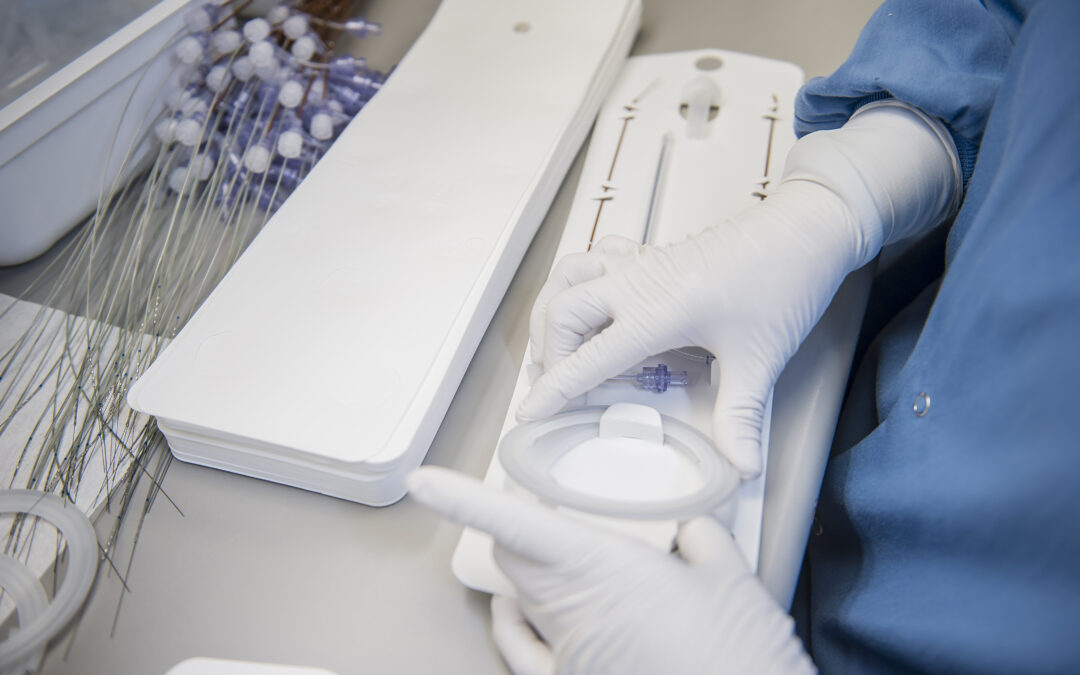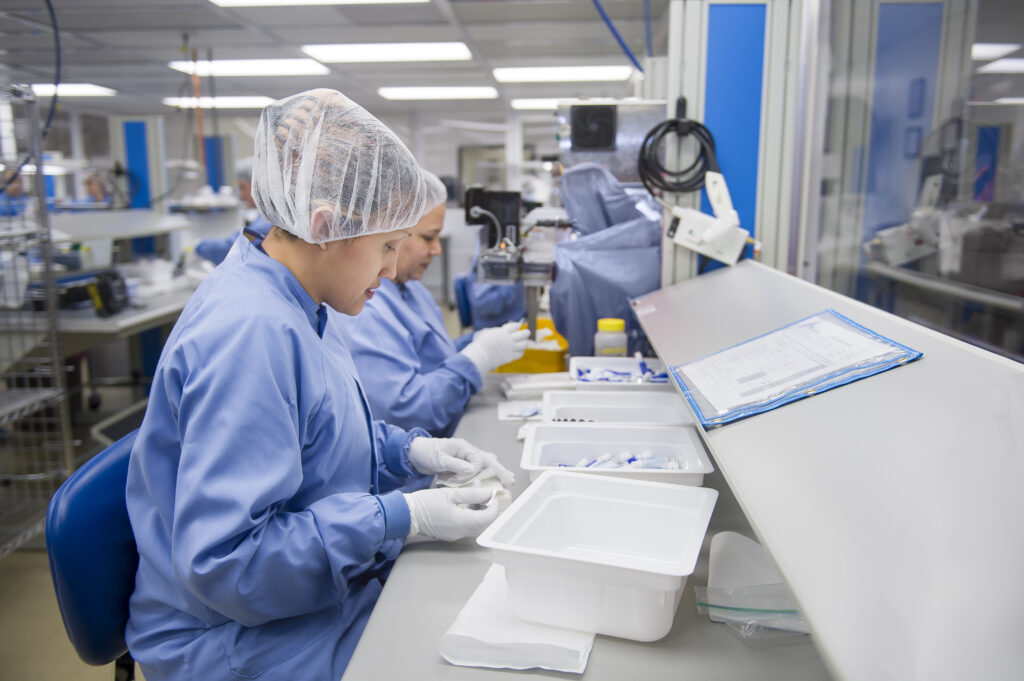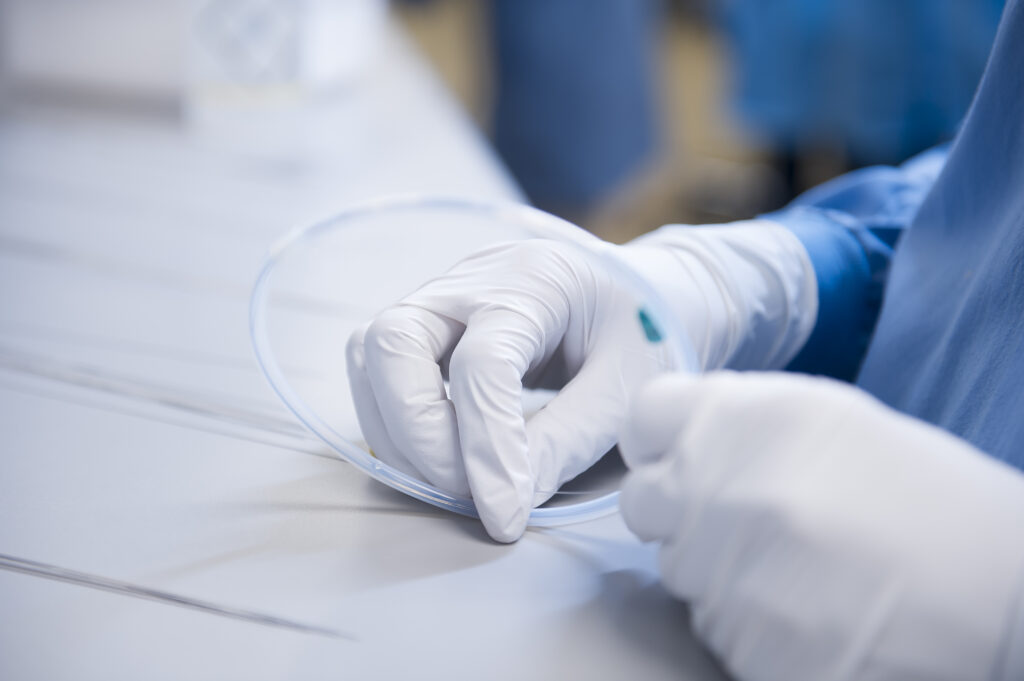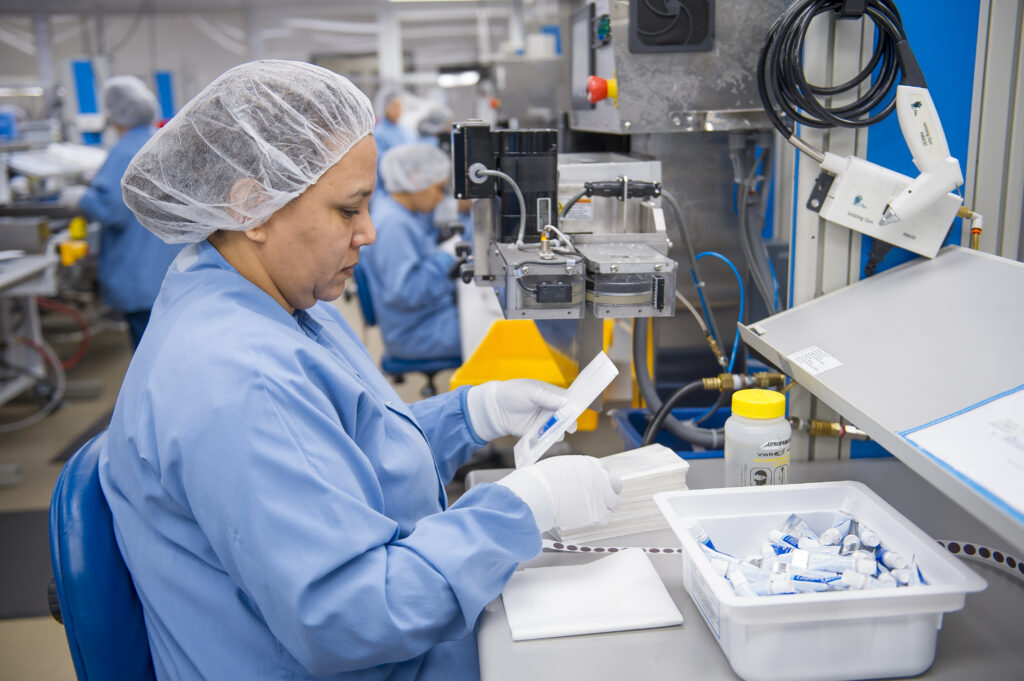The field of healthcare relies heavily on medical devices, which are essential for diagnosis, treatment, and patient care. However, ensuring that these devices reach healthcare providers and patients in a safe and reliable condition requires meticulous manufacturing and packaging processes. The United States boasts over 6,500 medical device companies, according to the U.S. Food and Drug Administration (FDA), emphasizing the industry’s immense scale and significance.
Amidst this landscape, contract assembly emerges as a crucial component, involving the outsourcing of assembly and integration tasks to specialized service providers.
In this article, we will delve into the world of medical device contract assembly and explore its pivotal role in the medical device industry.
Understanding Medical Device Contract Assembly
Medical device contract assembly refers to the practice of outsourcing the assembly and integration of medical devices from the Original Equipment Manufacturer (OEM) to external service providers. These providers specialize in efficiently and accurately assembling different components to create a fully functional medical device.
The process itself helps manufacturers streamline their operations and focus on core competencies while leveraging the expertise of contract assembly providers. It begins with a detailed understanding of the device’s design and required components. Once the manufacturer has finalized the product design and identified the necessary components for the medical device, the contract assembly process begins in collaboration with the external service providers.
They procure the required individual components and meticulously assemble them according to the manufacturer’s product specifications which can include tasks such as connecting electrical components, assembling the device, and gathering different components into one kit.
Role of Contract Assembly in Manufacturing and Packaging
The role of contract assembly in manufacturing and packaging is multifaceted and crucial for the successful production and delivery of medical devices. Let’s explore the key aspects of its role in each of these areas:
- Manufacturing
- Streamlining Operations:
Contract assembly allows medical device manufacturers to focus on their core competencies while outsourcing the assembly tasks to specialized service providers. By doing so, manufacturers can streamline their operations, optimize resource allocation, and increase overall efficiency.
- Expertise and Specialized Equipment:
Contract assembly providers possess extensive knowledge and experience in assembling medical devices. They have access to advanced assembly equipment and production facilities (such as cleanrooms) specifically designed for efficient and precise assembly.
- Quality Control:
Contract assembly services incorporate stringent quality control measures throughout the assembly process. This includes inspections, functional testing, and adherence to regulatory requirements. By maintaining rigorous quality control, contract assembly contributes to the reliability and safety of the final product.
- Packaging
- Integration with Assembly:
Contract assembly seamlessly integrates with the packaging phase of medical device production. Once the devices are assembled, contract assembly providers work closely with manufacturers to ensure proper packaging design, materials, and labeling. This collaboration ensures that the packaging aligns with the device’s specific needs and regulatory guidelines.
- Protection and Preservation:
The packaging of medical devices is crucial to protect them during transportation and storage, and contract assembly ensures that the devices are packaged in a way that maintains their sterility, integrity, and functionality. This includes utilizing appropriate packaging materials and techniques to safeguard the devices from environmental factors, contamination, and damage.
- Regulatory Compliance:
Contract assembly providers are well-versed in the regulatory requirements for medical device packaging. They ensure that the packaging meets the necessary standards and guidelines set by regulatory authorities, which is vital to ensure the safety and effectiveness of the packaged medical devices.
Advantages of Outsourcing Contract Assembly Services
Knowing how important the role of contract assembly in the packaging and manufacturing process really is, it becomes evident that outsourcing these services can bring several significant advantages for medical device manufacturers such as:
- Expertise and Specialized Skills
The most obvious advantage of outsourcing assembly tasks to experts is their expertise. They often have years of experience assembling many different kinds of devices, which gives them a deep base of knowledge that a single medical device manufacturer may not have. Through outsourcing, manufacturers can tap into their specialized skills and ensure that their devices are assembled with precision and efficiency.
- Cost Savings
Outsourcing contract assembly services offers substantial cost savings for manufacturers by eliminating the need to invest in assembly equipment, facilities, and skilled labor. This frees up capital expenditures and reduces ongoing production costs, enabling manufacturers to allocate their resources more strategically.
- Scalability and Flexibility
Contract assembly services provide flexible production scalability to manufacturers. They can easily adjust assembly requirements as demand fluctuates, without the need for extensive infrastructure or workforce investments. This scalability empowers manufacturers to swiftly respond to market demands and adapt to evolving business dynamics.
- Focus on Core Competencies
Outsourcing contract assembly frees up internal resources, enabling manufacturers to focus on core competencies such as research, development, and marketing. This strategic focus enhances productivity, fosters innovation, and optimizes overall business performance.
- Quality Control and Assurance
Contract assembly providers prioritize stringent quality control to meet high standards. They adhere to industry regulations, conduct thorough inspections, and perform functional testing, reducing the risk of errors or defects. This commitment ensures manufacturers deliver reliable and safe medical devices that meet quality standards and compliance requirements.
- Time Efficiency
Contract assembly providers specialize in efficient assembly processes, allowing for faster turnaround times. By outsourcing assembly tasks, manufacturers can accelerate their production schedules, bring products to market more quickly, and capitalize on time-sensitive opportunities.
How Contract Assembly Services Integrate with Medical Device Packaging
Having explored the advantages of outsourcing contract assembly services, it is important to understand how these services seamlessly integrate with medical device packaging.
- Ensuring Proper Assembly
Proper assembly of medical devices is crucial to their functionality and safety. Contract assembly services work closely with manufacturers to ensure all components are assembled accurately and in the right sequence. This integration includes electrical connections, fastening mechanisms, and any other necessary steps to create a fully functional device.
- Leveraging Expertise and Specialized Equipment
Contract assembly providers possess the necessary expertise and specialized equipment to assemble medical devices’ production efficiently. They have in-depth knowledge of various manufacturing techniques and can handle complex assemblies while minimizing the risk of errors and optimizing overall efficiency.
- Quality Control and Assurance Processes
Contract assembly services implement rigorous quality control and assurance processes to verify the integrity of the assembled devices. These processes involve comprehensive inspections, functional testing, and adherence to regulatory requirements. By incorporating quality control measures, contract assembly providers contribute to the overall reliability and safety of the finished product.
- Packaging and Assembly
Packaging and Assembly are highly interconnected and are often combined into one service offering. It is usually more efficient for one supplier to coordinate the assembly and packaging of a device as well as manage sterilization if necessary. Experienced medical device contract manufacturers think of packaging and assembly as an integrated whole, which allows them to consider how the two steps impact each other, and to search for the most efficient combination.
Future Trends in Contract Assembly
As technology advances, contract assembly services will benefit from innovations in automation, robotics, and artificial intelligence.
So far, the global market for medical device outsourcing was valued at USD 117.5 billion in 2022, and it is expected to grow at a compound annual growth rate (CAGR) of 12.1% from 2023 to 2030, largely due to technological advancements (Grand View Research, 2021). These advancements can enhance the speed and precision of assembly processes, leading to improved productivity and reduced error rates.
Furthermore, the integration of smart manufacturing technologies can enable real-time monitoring and data analytics, allowing for proactive quality control and predictive maintenance. Customers are demanding increased transparency during the assembly process and want real-time updates on the progress of their projects. A good contracting company provides a window into their operations to provide peace of mind to customers.
Regulatory Changes and Industry Standards
As we explore the future trends in contract assembly, it’s important to consider how regulatory changes and industry standards will shape the landscape. The introduction of the European Union’s Medical Device Regulation (MDR) in 2021, for instance, significantly affected the medical device assembly and packaging industry. The MDR imposed stricter standards for medical device manufacturers, including enhanced scrutiny of contract assembly processes to ensure compliance with safety and quality requirements.
These regulatory changes emphasize the importance of staying abreast of evolving regulations and proactively adapting to meet the new requirements. Contract manufacturers are used to this and stay connected to regulatory changes because they deal with them daily. It can be more difficult for a single product company to stay updated on complex regulations across the world.
Conclusion
In the realm of contract assembly, the future holds immense potential driven by technological advancements and regulatory changes. These advancements can enhance the speed, precision, and productivity of assembly processes, leading to improved efficiency and reduced error rates.
To thrive in this dynamic environment, it is crucial for stakeholders to remain proactive, stay informed about evolving regulations, and continuously seek opportunities for innovation and improvement. Collaboration between manufacturers and contract assembly providers becomes increasingly essential in navigating the complexities of compliance, quality control, and meeting market demands.
As the medical device industry continues to evolve, contract assembly services will play an important role in ensuring efficient, precise, and compliant assembly processes. By embracing technological advancements, adapting to regulatory changes, and fostering strong partnerships, manufacturers and contract assembly providers can position themselves for success in delivering innovative, reliable, and safe medical devices that contribute to better patient outcomes and advance healthcare as a whole.
Summary
- Contract assembly services offer numerous advantages for medical device manufacturers, including expertise, cost savings, scalability, focus on core competencies, quality control, and time efficiency.
- Technological advancements such as automation and robotics will continue to enhance the speed, precision, and productivity of contract assembly processes, while smart manufacturing technologies enable real-time monitoring and data analytics for proactive quality control.
- Regulatory changes, such as the European Union’s Medical Device Regulation (MDR), impose stricter requirements on contract assembly processes, necessitating compliance and adherence to safety and quality standards.
- Collaboration between manufacturers and contract assembly providers is crucial for navigating regulatory changes, meeting quality standards, and delivering safe and compliant medical devices.
- The future of contract assembly is driven by technology and evolving regulations, offering opportunities for innovation, efficiency, and improved patient outcomes.




